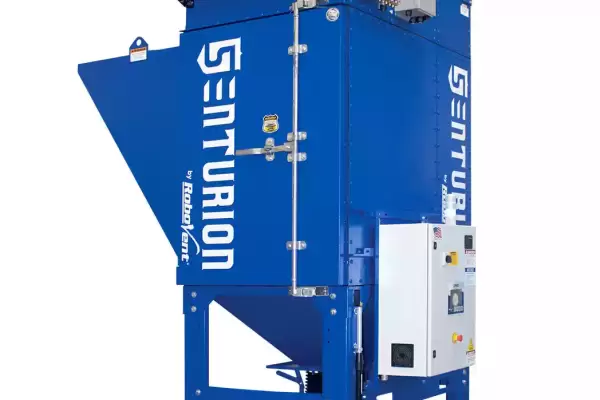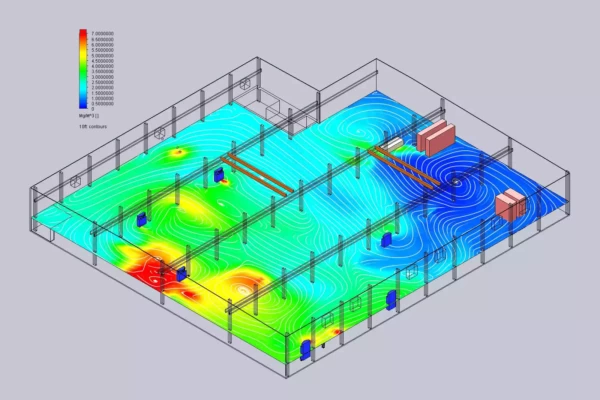WHAT ARE NANOMATERIALS?
Nanomaterials are materials with a size ranging from 1 to 100 nanometers (nm), where one nanometer is one billionth of a meter. At this scale, materials exhibit unique physical, chemical, and mechanical properties that differ from their bulk counterparts. These unique properties make nanomaterials useful for a wide range of applications in various industries. Nanomaterials can be made of a wide variety of materials, including metals, metal oxides, polymers, ceramics, and carbon-based materials such as graphene and carbon nanotubes.
NANOMATERIALS IN BATTERY PRODUCTION
One significant application of nanomaterials is in battery production. Nanomaterials such as nanoparticles of metals or metal oxides can improve the performance of batteries. For example, nanomaterials can increase energy density, reduce charging time, and extend the lifespan of lithium-ion batteries. Nanomaterials are increasingly used in battery production to:
- Increase the battery's capacity, efficiency, and lifespan
- Enhance the conductivity of the electrode material
- Improve the rate of charge and discharge
Nanomaterials used in battery production include:
- metal oxides
- carbon-based materials, including carbon nanotubes and graphene
- conductive polymers
- lithium salts (e.g., lithium cobalt oxide, lithium iron phosphate)
- silicon, silicon alloys or carbon-coated silicon nanoparticles
OTHER APPLICATIONS FOR NANOMATERIALS
Nanomaterials are also used in many other industries, including:
- Electronics: Nanomaterials are used to improve the performance of electronic devices such as transistors, sensors, and displays. For example, carbon nanotubes are used in the fabrication of transistors due to their excellent electrical conductivity.
- Medicine: Nanomaterials are used in medicine for drug delivery, imaging, and diagnosis. Nanoparticles can be used to target specific cells in the body and deliver drugs directly to them, reducing side effects and improving treatment efficacy.
- Energy: Nanomaterials are used in the production of solar cells, fuel cells, and hydrogen storage materials. Quantum dots are used in solar cells to improve their efficiency by capturing more sunlight.
- Environmental remediation: Nanomaterials can be used to remove pollutants from water and air. For example, titanium dioxide nanoparticles can be used to break down pollutants in water and air through a process called photocatalysis.
- Agriculture: Nano-polymers can be loaded with active compounds for improved delivery of nutrients, hormones, genes or pesticides, and metal nanoparticles (e.g., copper, zinc) may be used to improve soil quality or improve plant growth.
- Packaging: Nanomaterials can be used to improve the shelf life and safety of food, medicines or nutraceuticals by preventing spoilage and contamination. Nanosilver and nanocopper particles can be incorporated into food packaging to prevent the growth of bacteria and fungi.
 EXPOSURE RISKS FOR NANOMATERIALS
EXPOSURE RISKS FOR NANOMATERIALS
Exposure to nanoparticles, including inhalation, is an area of concern due to their small size and potential to penetrate deep into the lungs and other organs. In general, nanomaterials are more toxic and have a greater range of effects on the human body than larger particles of the same material. Nanoparticles are small enough to cross over from the lungs into the bloodstream, where they can be carried to many different organ systems. Some have also been shown to cross the blood-brain barrier, which increases the potential for cognitive and neurological effects. More research remains to be done to better understand the exposure effects of nanomaterials. Many researchers suggest that all nanomaterials should be considered potentially hazardous unless there is proven research that a specific nanomaterial can be considered safe.
Workers who handle nanoparticles in manufacturing may be at increased risk of exposure through inhalation, skin contact, or accidental ingestion. Proper safety precautions and protective equipment are necessary to reduce the risk of exposure. The specific risks of exposure to nanomaterials depend on their chemical makeup. Here are some potential exposure risks of inhaling nanoparticles.
- Respiratory effects: Inhaling nanoparticles can cause respiratory effects such as inflammation, oxidative stress, and lung damage. Studies have shown that nanoparticles can cause changes in lung function and immune response and may increase the risk of lung cancer. Carbon nanotubes and nanofibers, for example, may be associated with lung diseases like fibrosis or mesothelioma; their long, thin shape may mimic the behavior of asbestos fibers in the lung. Lithium-based nanoparticles are also associated with fibrosis and lung cancer.
- Cardiovascular effects: Some studies suggest that inhalation of nanoparticles may have cardiovascular effects, such as increased blood pressure and heart rate. This may be due to the ability of nanoparticles to enter the bloodstream and interact with the cardiovascular system.
- Neurological effects: There is evidence to suggest that nanoparticles may have neurological effects if they are able to cross the blood-brain barrier. Studies have shown that nanoparticles can cause oxidative stress and inflammation in the brain, which may contribute to neurological disorders. Lithium-based nanoparticles and many metals and metal oxides are considered to be neurotoxic; exposure may lead to neurological disorders that mimic Alzheimer's disease or Parkinson's disease.
- Genotoxicity: Some studies have shown that carbon nanotubes and other carbon-based nanomaterials can cause DNA damage and mutations, which can lead to cancer and other diseases.
- Immunotoxicity: Some polymer-based nanoparticles have been shown to cause immunotoxicity, which can affect the immune system's ability to fight off infections and diseases.
- Skin effects: Nanoparticles can also be absorbed through the skin and cause skin irritation, inflammation, and oxidative stress. Some metals, such as nickel and chromium, are known to cause skin sensitization and allergic reactions. Many polymers can also produce allergic reactions.
COMBUSTION RISKS FOR NANOMATERIALS
Many nanomaterials also create a significant risk of a combustible dust explosion. Some nanomaterials can be more flammable and explosible than their bulk counterparts due to their high surface area and increased reactivity. For example, carbon nanotubes have been shown to be highly flammable and can ignite at lower temperatures than bulk carbon. Particle size is one of the factors that impact the explosibility of a material; the more finally divided the material, the more surface area is available for reaction and the more likely the material is to remain airborne in a cloud. As a result, nanomaterials will tend to have a higher ST class than larger particles of the same material.
Employers working with potentially combustible nanomaterials should conduct a Dust Hazard Analysis (DHA) in compliance with the National Fire Prevention Association (NFPA) Standard 652: Standard on the Fundamentals of Combustible Dust. (Note: this standard and other combustible dust standards will be combined as NFPA 660 in 2025.) A DHA will give manufacturers a better understanding of the explosibility of their material and specific hazards related to their processes.
Nanomaterials that may create a risk of a combustible dust explosion include:
- Metal nanoparticles: Metal nanoparticles can have high surface areas and high reactivity, making them more prone to combustion. In addition, some metal nanoparticles, such as aluminum and magnesium, are known to be highly combustible. Lithium cobalt oxide, lithium iron phosphate, and lithium manganese oxide, commonly used as cathode materials in lithium-ion batteries, may also pose a high combustion risk.
- Carbon-based nanomaterials: Carbon-based nanomaterials such as carbon nanotubes and graphene can have high surface areas and high reactivity, making them more prone to combustion. In addition, some carbon-based nanomaterials, such as nanodiamonds and carbon black, are known to be highly combustible.
- Organic and polymeric nanoparticles: Organic and polymeric nanoparticles can also create a risk for combustible dust explosions. These materials can have high surface areas and are prone to ignition if exposed to a spark or heat source.
Learn more about mitigating combustion risks for battery dusts in the Visual Guide to Combustible Dust Collection.
 REGULATIONS FOR NANOMATERIALS
REGULATIONS FOR NANOMATERIALS
Currently, nanomaterials are not regulated separately in the U.S. from their larger material counterparts. All nanomaterials are considered to be respirable, which means that Permissible Exposure Limits (PELs) for respirable materials set by the Occupational Health and Safety Administration (OSHA) apply. Manufacturers can find the PEL specific to the materials they are working with in OSHA's Annotated PEL Tables. These exposure limits have the force of law, and employers are required to ensure that employees are not exposed to materials at levels above the PEL.
As more research is done into the health impacts of specific nanomaterials, the regulatory environment can be expected to change. Because the health impacts of nanomaterials tend to be greater than for larger particulate of the same material, employers working with nanomaterials may wish to use a lower exposure threshold when designing dust collection systems. Recommended Exposure Limits (RELs) from the National Institute of Occupational Safety and Health (NIOSH) and Threshold Value Limits (TLVs) from the American Conference of Governmental Industrial Hygienists (ACGIH) may be lower than the OSHA-required PEL. However, most of these levels are also not specific to nanomaterials.
Manufacturers working with potentially combustible nanomaterials must also comply with all regulations related to combustible dust. Combustible dusts are regulated under OSHA's General Duty Clause (Section 5(a)(1)) with additional requirements under the Hazardous Locations (§1910.307), Hazard Communication (§1910.1200) and Housekeeping (§1910.22) standards. OSHA's Combustible Dust National Emphasis Program (NEP) outlines policies and procedures for inspecting workplaces that create or handle combustible dusts. In addition, manufacturers dealing with combustible dusts must follow NFPA standards for handling combustible materials, including NFPA 654, NFPA 484, NFPA 68, and NFPA 69.
Hazardous materials may also be subject to Environmental Protection Agency (EPA) rules for emission control and material storage and disposal under the Clean Air Act, Clean Water Act, and Resource Conservation and Recovery Act (RCRA).
MORE DUST TYPES
SOLUTIONS FOR NANOMATERIAL DUST COLLECTION
Nanomaterials can be difficult to control due to their extremely small size and light weight. That means standard dust control solutions may not be appropriate or effective. RoboVent can help you design a dust control solution for nanomaterials that will keep employees safe, prevent contamination of industrial processes with fugitive nanodust, reduce combustion risks and maintain compliance with all regulations.
Engineering controls such as dust collection and air filtration must be used as a primary control measure when working with nanomaterials. RoboVent Senturion is a powerful, flexible dust collector that can be adapted to a wide range of applications, including the collection of nanomaterials. RoboVent engineers can develop a customized solution for nano dust control, including:
- Hood, ductwork and system design to maximize capture rates and minimize disturbance of usable materials or sensitive manufacturing atmospheres
- Ventmapping Engineering services
- Filter selection (including HEPA filtration and molecular filtration) for ultrafine particulate and nanomaterials
- Indoor air quality and exposure testing
- Regulatory compliance
Nanomaterials Dust Collection Collectors
Clean Air Technology Services
CONTACT US
Contact one of our industrial dust experts to gain the advantage against dust-generating processes and applications.








